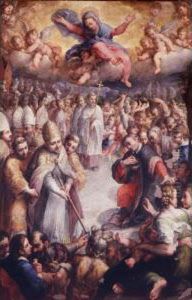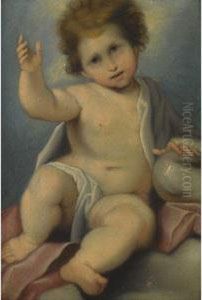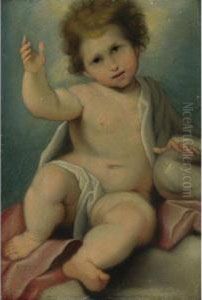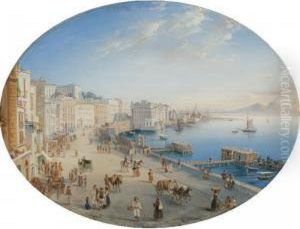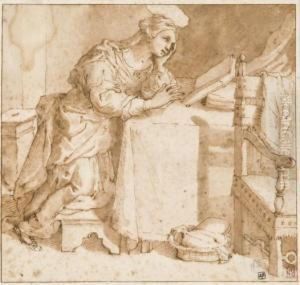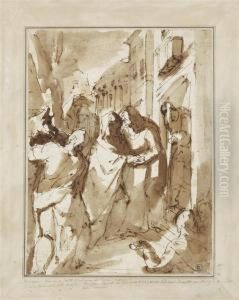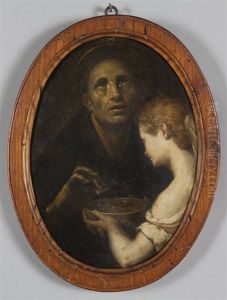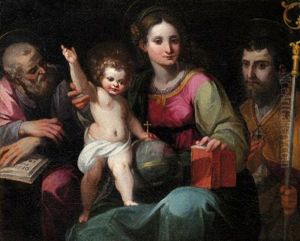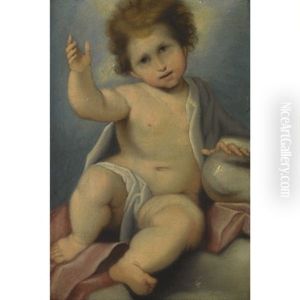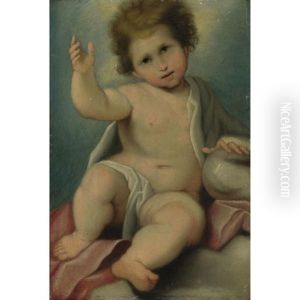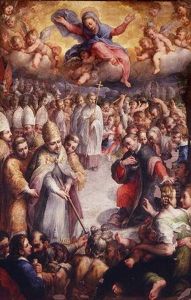Antonio Viviani Il Sordo Paintings
Antonio Viviani, known as Il Sordo (the Deaf), was an Italian painter of the late-Renaissance period, active mainly in his hometown of Urbino and the surrounding regions of Marche during the late 16th and early 17th centuries. Born in Urbino in 1560, Viviani earned his nickname 'Il Sordo' due to his hearing impairment. Despite any challenges this may have presented, he went on to become a respected artist of his time.
Viviani apprenticed under the Mannerist painter Federico Barocci, who was also a native of Urbino. Barocci's influence is evident in Viviani's use of color and his gentle, graceful figures. Viviani's style reflects the transition from the Mannerist to the Baroque period, with an emphasis on dynamic compositions, a heightened sense of drama, and a clear interest in naturalism. He was adept at frescoes and altarpieces, with his works often characterized by their vibrant colors and expressive figures.
Throughout his career, Viviani received numerous commissions for religious institutions. One of his notable works is the fresco decoration of the Chapel of the Incarnation in the Duomo of Urbino, which he executed around 1603. His other significant works include the 'Madonna del Popolo' and 'The Miracle of the Snow', both of which showcase his ability to create emotional narratives that appealed to the devotional sensibilities of his contemporaries.
Despite his successes, Antonio Viviani Il Sordo remains a less well-known figure compared to some of his contemporaries. He died in 1620, leaving behind a body of work that continues to be appreciated for its contribution to the development of early Baroque painting in the Marche region. His works can still be seen in various churches and galleries in Italy, offering insight into the evolution of Italian art during a period of significant change and innovation.
